Leg locks have revolutionized no-gi grappling over the last decade and are a core part of the game. While everyone is familiar with the core BJJ positions like the guard, mount, and side control, once the legs get entangled, things are not so clear for everyone. But leg entanglement positions are just as important in rulesets that allow leg locks, so what are the main ones?
The fundamental leg lock positions can be separated into three distinct categories with three positions each. The first includes the basic Ashi Garami and the inside and outside Ahi Garami, and the second consists of the saddle and the basic and lateral kneebar positions. The third category comprises the 50/50 variations, the 80/20, and the 90/10.
Even traditionalist gi practitioners have come to appreciate leg locks for their potency despite them being frowned upon for the longest time. With leg locks being a core part of high-level level submission grappling and being gradually implemented even by the IBJJF, learning to recognize and navigate leg lock positions has become necessary for all practitioners and spectators.
The 9 Fundamental Leg Lock Positions
Leg locks are a rather deep topic and can seem overwhelming at first. There are many leg entanglements, and knowing what to protect and how to attack can be challenging.
Sometimes, it’s difficult to know if you are in a better position, unlike the standard BJJ positions where one is clearly on top and the other is on the bottom.
Having a good orientation in leg lock positions or entanglements is the first requirement to become more effective with the actual leg locks. You will become much better at this intricate and dangerous part of the game
by identifying your position and knowing the progressions.
All leg-locking positions can be entered into one big sequence and flow from each other. Ryan Villalobos has separated them into three main categories for easier understanding and categorization: A, B, and C.
In category A, the isolated foot is on the outside of your body, and these are the three Ashi Garami positions. In category B, the trapped leg is inside, and we have the saddle, lateral, and classic kneebar positions.
The C category includes leg entanglements where both players have a leg trapped, and the positions are 50/50, 80/20, and 90/10, where the numbers represent the approximate advantage a player has over his opponent in the entanglement.
5 Step Blueprint To Build A BJJ Strength Workout To Demolish Your Opposition
Learn how to plan your strength training to maximize transfer to the mats.
Now, let’s look at each of the nine main leg lock positions separately. We have an excellent video overview of the positions but below are the written details complementing it.
Basic Ashi Garami (A1)
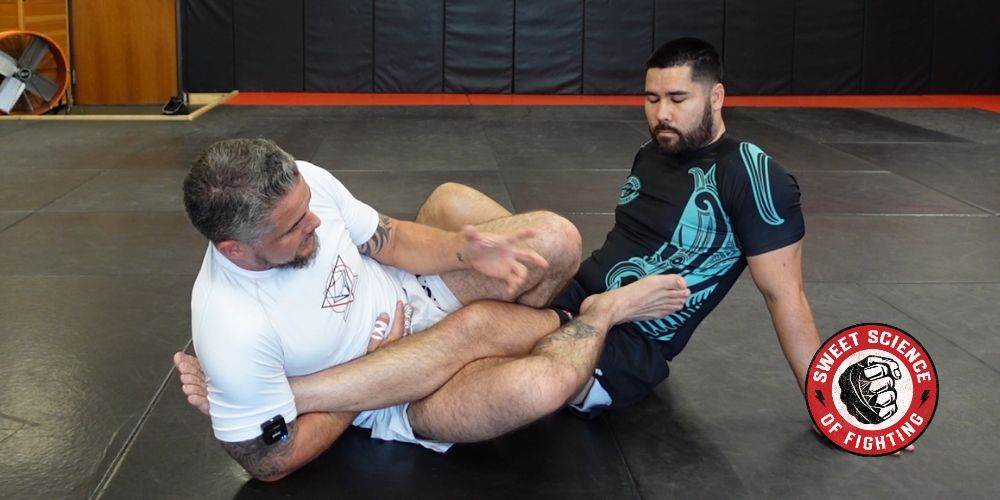
The first leg-lock position most BJJ practitioners learn is the basic Ashi Garami, which means leg entanglement in Japanese. This is the common starting point in most modern leg lock systems. Some people also like to call this position the single-leg X-guard.
For the basic Ashi Garami position, you need to isolate and control the opponent’s leg on the outside of your body. This is done by placing your outside leg’s heel on the hip and the inside leg hooking their inside thigh with the foot.
The hands control the opponent’s leg in the basic ankle lock position. The key to a solid Ashi Garami is to pinch both knees and retract your heels to prevent the opponent from pulling their leg back.
The basic Ashi allows for ankle locks, outside heel hooks, and the toe hold, but it’s usually first taught alongside the ankle lock.
Double Outside Ashi Garami (A2)
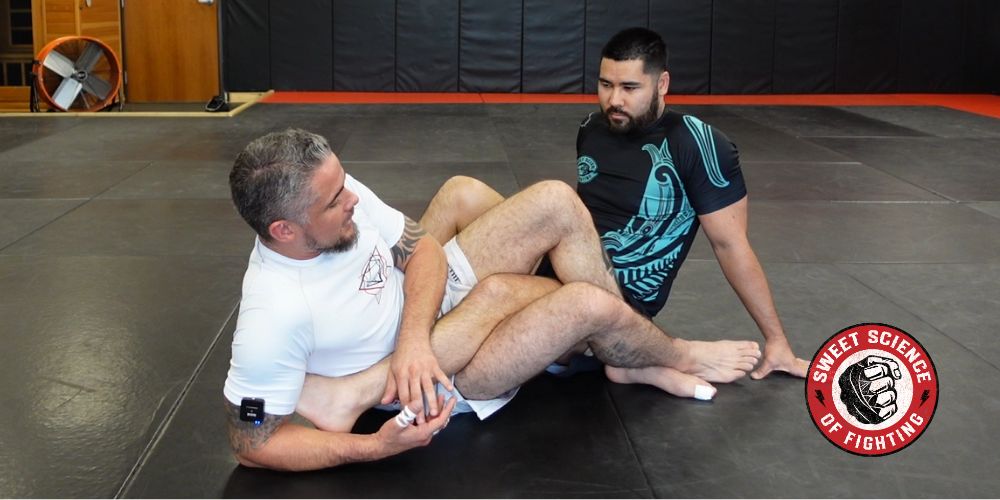
The outside Ashi Garami is almost the same as the basic one, but as the name suggests, your inside leg needs to be on the outside of the opponent’s hips.
This position allows better control than the basic but also opens your legs for leg locks. Another downside of the outside Ashi is that your back is more exposed.
Both the standard and outside Ashi Garami positions are legal under all rulesets and open up the possibilities for ankle locks, which are also legal at all levels of competition, both in gi and no gi.
This is why all practitioners use the basic and outside Ashi, and are usually the first leg lock positions you learn.
Inside Ashi Garami (A3)
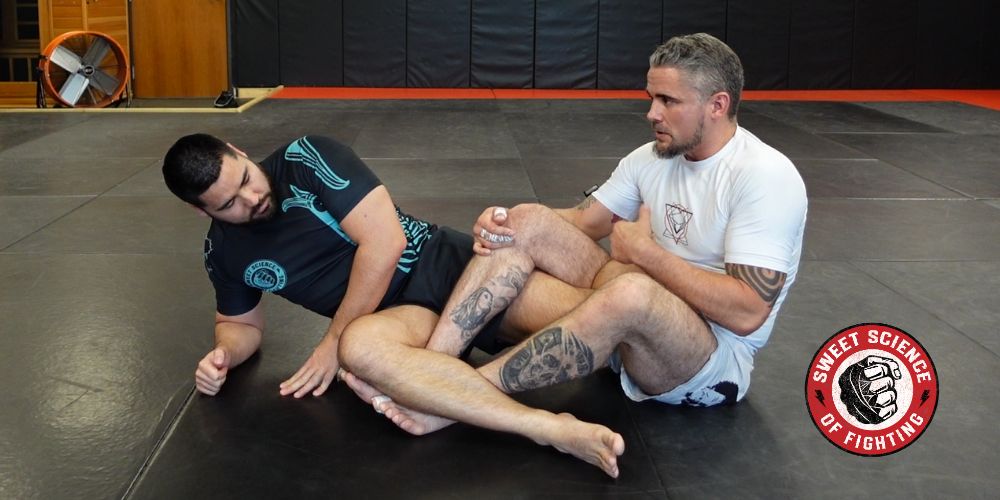
In the inside Ashi Garami positions, both your feet will be inside the opponent’s isolated leg. This is also known as the reaping position, which makes it illegal under all gi rulesets because the position puts a lot of pressure on the knee.
The inside Ashi is a powerful controlling entanglement, and your foot position is crucial. Place both your feet hooked under the calf and the knee of the opponent’s free leg.
This hooking prevents them from turning and producing an escape but also protects your feet from submissions.
This position places a lot of pressure on the reaped knee before starting to hunt for a submission, but the outside heel hook and toe hold are the two primary attacks from the inside Ashi Garami.
Honey Hole / Saddle (B1)
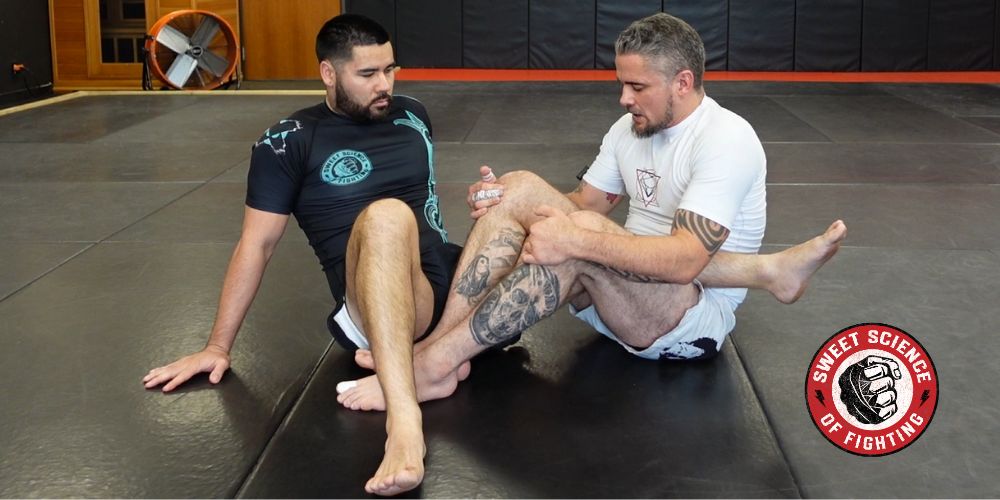
The honey hole position, or the saddle, is the first of the inside positions we will look at. It’s considered an inside position because the isolated leg is no longer on the outside of your body but on the inside and across.
Your outside foot goes across the trapped leg and between their legs.
With this position, the knee line becomes very important, and the trapped leg’s knee must be as deep and as far from your knee as possible. The saddle is a common position because it’s legal in all rulesets.
However, in the gi, where heel hooks and reaping are banned, the position is used differently than in no-gi. In submission grappling, you can attack the trapped leg with inside heel hooks, while in the gi, you are not allowed to hold the trapped leg as long as your hips are facing the side of the opponent’s knee.
Lateral Kneebar Position (B2)
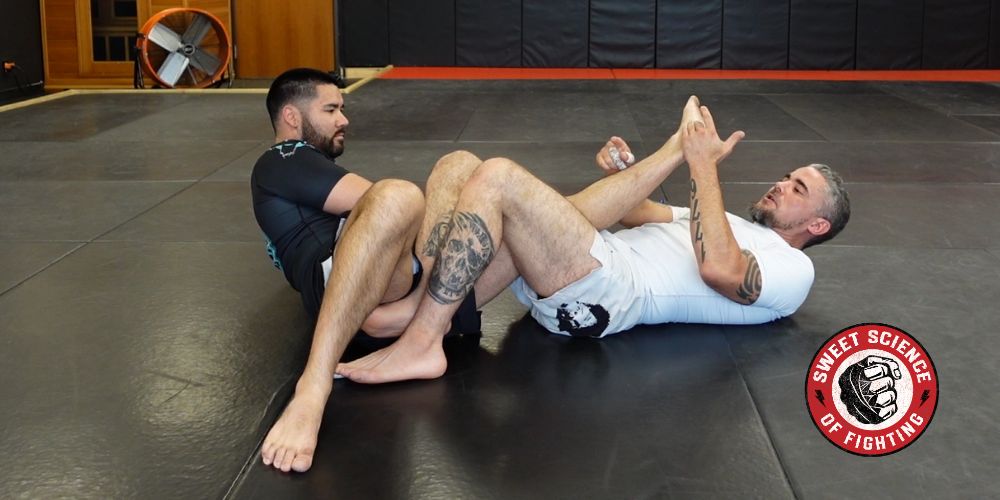
The lateral kneebar is a position directly linked to a specific submission, which is easily discerned by the position’s name, and it’s the lateral kneebar.
The transition from saddle to kneebar is straightforward. From the sitting saddle position, lay flat, extend the opponent’s isolated leg, and turn it so the side of the leg is across your center line.
This position is terrifying if you are on the receiving end just by realizing how exposed your knee is. The most direct attack is the lateral kneebar, which painfully extends the knee sideways with the potential for grievous damage.
But even if you don’t get the sub, the position offers quick and easy transitions back to the saddle, where you can pursue heel hooks or the inside Ashi Garami. With this threefold transition, you can keep them guessing until a position sticks.
Classic Kneebar Position (B3)
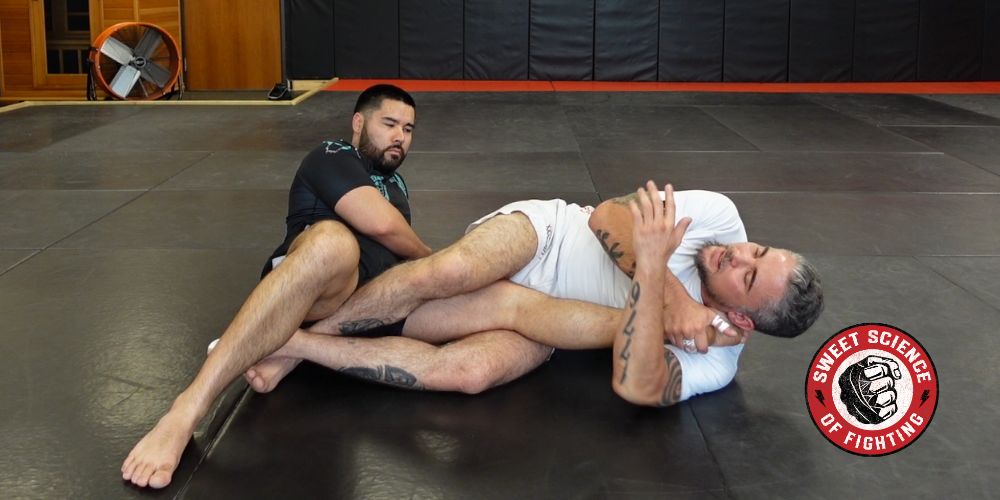
The classic kneebar position is the third natural progression from the saddle and lateral kneebar. You are on your side, and the trapped leg’s knee and toes point towards you.
The kneebar submission extends the knee the opposite way it’s supposed to by controlling the thigh with your hips and pulling the heel with your hands.
50/50 (C1)
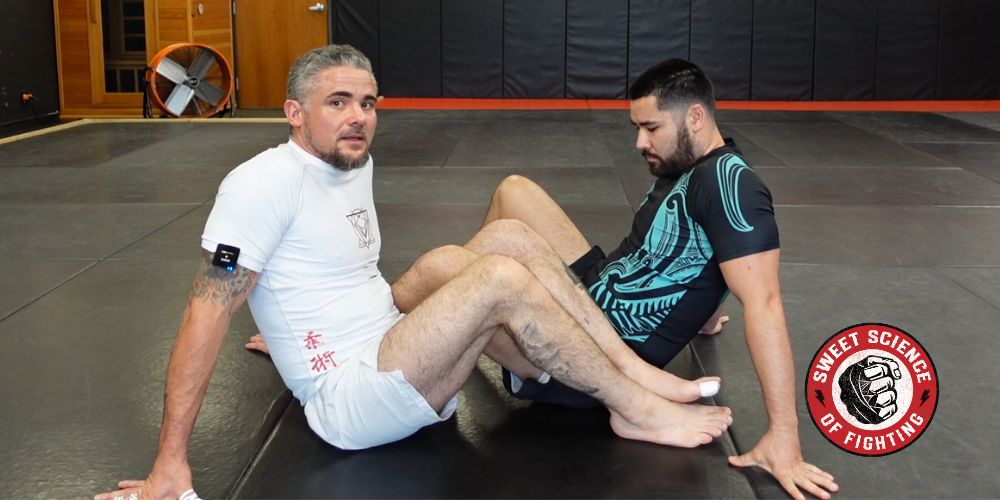
The 50/50 is a leg-entanglement position where both players are on equal ground to attack and defend. In the 50/50, you have a trapped leg entwined with the opponent’s trapped leg.
Your feet should be crossed, firmly on the mat, and knees pointing to the ceiling. Crossing your outside foot on top of your inside foot is always important, or you will be easy prey for a heel hook.
In no-gi, the most common attack from the 50/50 is the inside heel hook, but in the gi, the position is less effective and is usually used for sweeps or back takes, of which there are plenty.
Outside of heel hooks, the position provides opportunities for ankle locks and toe holds, among other options.
80/20 (C2)
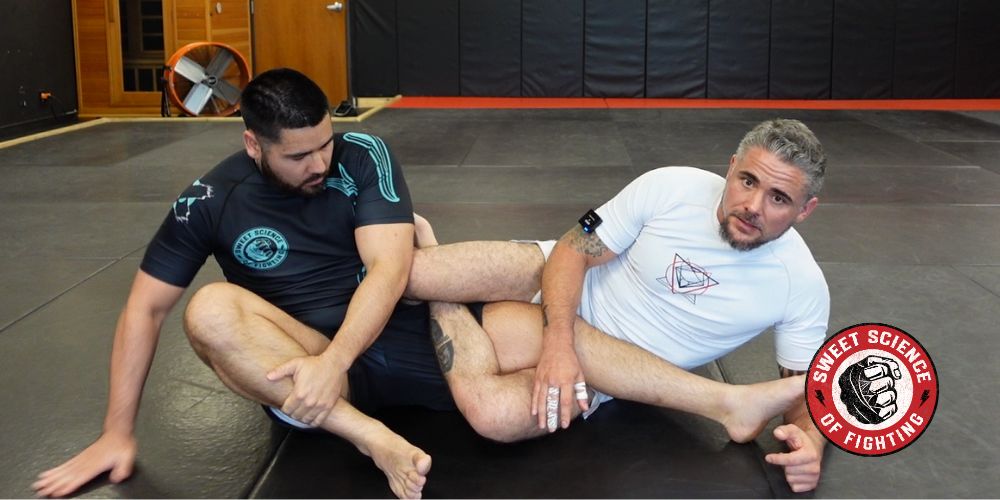
A small change in your hip angle turns the equal 50/50 into an 80/20, where you have a significant advantage (or disadvantage if you end up in the 20 part).
The improvement from the 50/50 comes from turning your inside knee down, angling your hips towards the opponent, and then triangling your legs.
This move hides your knee line and protects your inside leg from heel hooks, while the attacks to your outside leg are significantly less effective than in the 50/50.
At the same time, you have full access to their trapped leg. You have roughly 80% of the attacks available, while the opponent has access to 20%.
90/10 (C3)
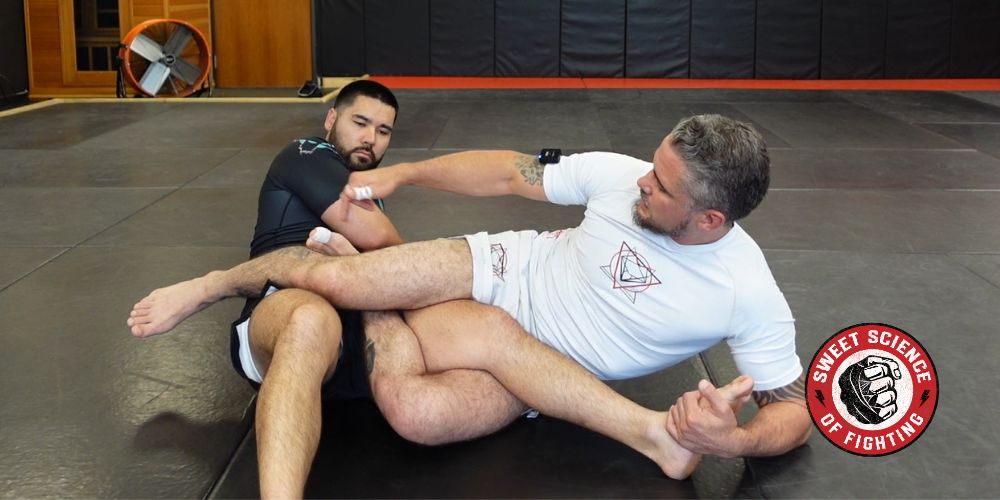
If you feel 20% attack capabilities for the opponent is still too much, you can further diminish their chances by progressing to the 90/10 position.
This is achieved by moving your outside leg to the inside of the opponent. From there, you have access to all the heel hooks and kneebars while your legs are even out of reach for the opponent, who is basically in full defensive mode.
Summary
Once you start training leg locks, it becomes crucial to know where you are, what is available, and how to improve your position. While this is visible in the classic BJJ positions, leg lock positions are not always as clear.
But once you learn to differentiate and use the Ashi Garamis, the Saddle and kneebar positions stemming from it, and the 50/50 things will quickly fall into place, and you will be well on your way to leg lock proficiency.

